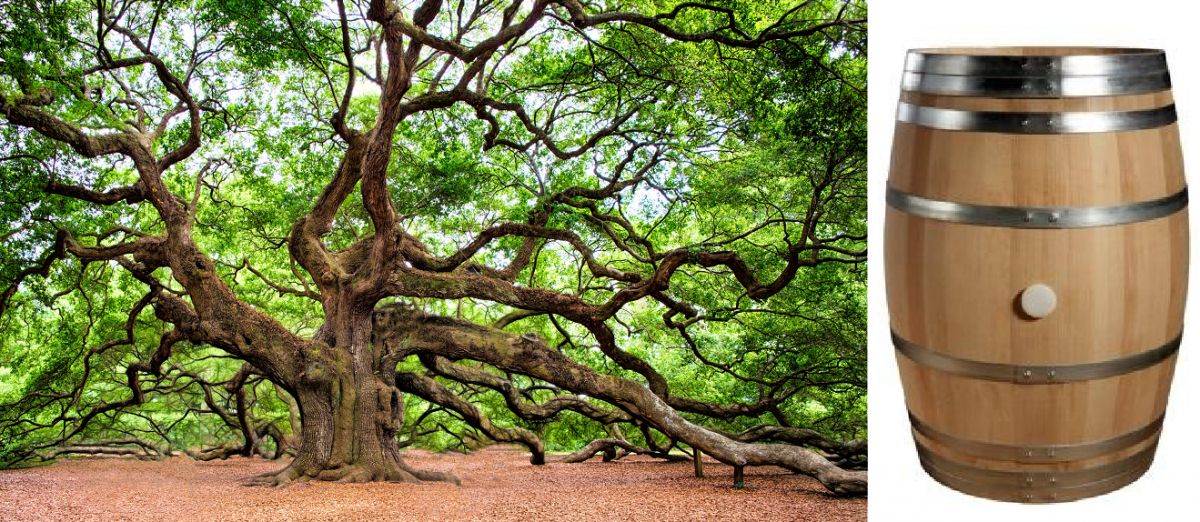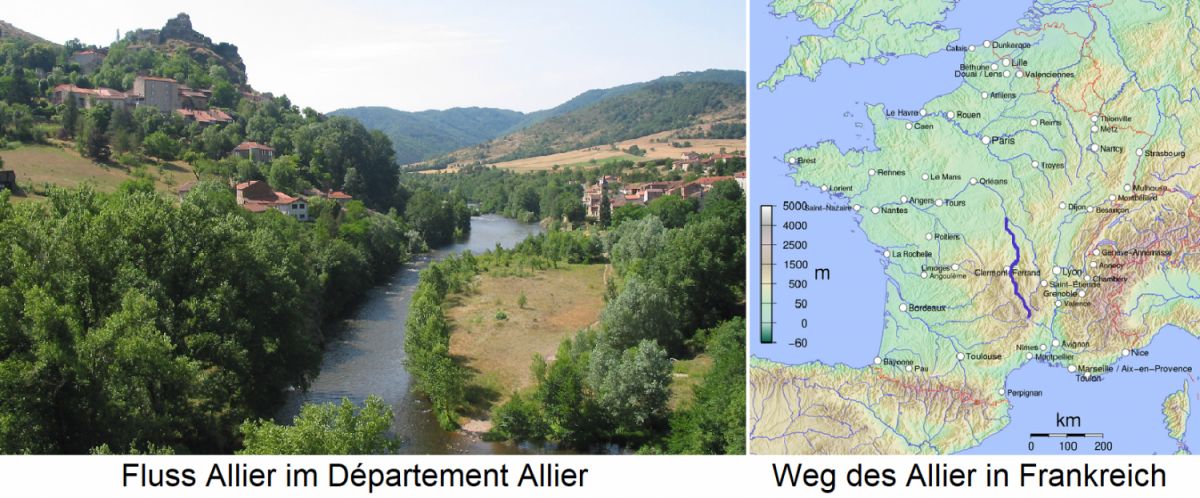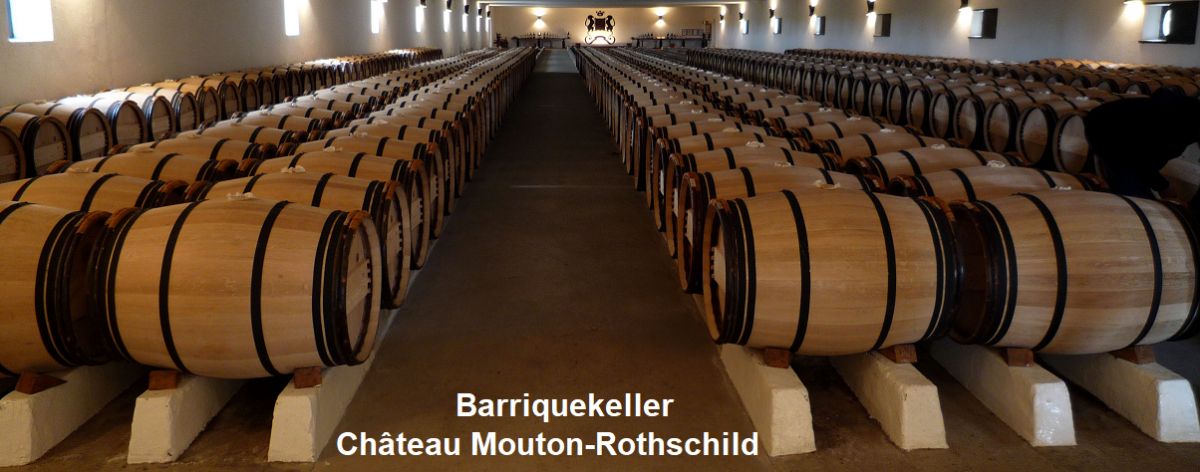Since ancient times, a wide variety of woods from the tree species acacia, eucalyptus, chestnut, cherry, palm, pine and cedar have been used to make wine casks. Wooden barrels were hardly known in ancient Greece, but the Greek historian Herodotus (482-425 BC) reports of such barrels in the city of Babylon, which were made of palm wood. It is considered fairly certain that the Celts were already using wooden barrels for transport two to one millennium before the calendar and that the Romans adopted this skill from them. However, the most suitable wood for wine storage or barrique ageing is oak. It is one of the hardest woods, tough, very durable and still easy to work with. In addition, the nature of the ring-shaped pores prevents liquids from passing through the wood. This is ideal for the construction of all kinds of vessels, especially barrels.
Affinity between oak and wine
Last but not least, oak wood has a natural affinity with wine. In France, this was recognised early on and has been used for centuries for the barrique type of barrel created in Bordeaux. There are around 300 species of oak worldwide, but only three white oak species belonging to the taxonomic genus Quercus are used for wooden barrels. Two of them grow in Europe. This is the winter oak, holm oak or sessile oak (Quercus sessiliflora or petraea), and the summer oak or common oak (Quercus robur or pedunculata). The third is the American white oak (Quercus alba) with numerous species. As a rule, American oak produces more astringent and aromatic wines than European oak. For the sake of completeness, we should also mention the oak species Quercus suber, from whose bark corks are made.

Production of oak barrels
Wood from trees that are at least 80 to 100 years old is used for the oak barrels. After completion, they are subjected to toasting (barrel burning). A distinction is made between three groups of wood phenols that enter the wine during barrique ageing. The primary ones are leached out directly, the secondary ones are formed chemically and microbially from the wood phenols and thirdly, there are those that are formed by the degradation of the oak wood component lignin. The most important of these aromatic substances include eugenols, furfurals, lactones, tannins, terpenes and vanillins. Fine-grained woods release these substances slowly and in smaller quantities and coarse-grained ones quickly and in larger quantities. The grain size is expressed in French, for example, as "grain fin" for a fine-pored wood and "grain gros" for a coarse-pored wood.
Until the beginning of the 20th century, oak wood came mainly from Poland, Latvia and Estonia. Today, the wood comes mainly from France and North America. The American oaks of the species Quercus alba grow mainly in the dry forests of eastern North America. The most important production states are Arkansas, Iowa, Minnesota, Missouri, Oregon, Pennsylvania and Wisconsin. The wood has a distinctive, perfumed aroma. It is particularly suitable for flavour-intensive red wines made from Cabernet Sauvignon, Syrah or Tempranillo (Rioja). Besides its country of origin, it is often grown in Australia and in Europe, especially in Spain. Increasingly, oaks from Croatia (Slavonia), Romania, Russia, Belarus, Ukraine and Hungary are also used. Small quantities also come from Austria (Manhartsberg and Ybbstal in Lower Austria) and Germany.
The type of wood preparation used in barrel construction plays a very important role in the quality of the barrel or the wine matured in it. Optimal barrel stave boards should be produced in such a way that the annual rings are at right angles to the wine side and the medullary rays are parallel to them (the medullary rays lead from the core in a star shape to the outside of the bark). If the pith rays are oriented differently, the wine can diffuse (evaporate) to the outside. No consideration is given to this in the production of construction timber; here the so-called lattice cut is used in order to have as little waste as possible. An alternative in barrel construction is to split the log along the medullary rays. This makes the wood less permeable to gas, which means that less sulphur dioxide is needed.
However, this advantage is partly lost through planing. Since splitting is more cost-intensive due to the labour involved and the large loss of wood, the star cut (mirror cut) is often used, which is carried out along the medullary rays. When drying the staves, the water content of the staves is reduced from 45% to 15%. In order to be able to shape the staves accordingly, the half-bound barrel is heated over an open fire at a heat of approx. 200 °Celsius. This leads to browning and, in extreme cases, clear charring or roasting, the toasting desired in barrique ageing.
Origin of suitable oak wood
Worldwide, French oak is considered the best due to its fine aromas and is most frequently used in Europe. The areas of origin are not too humid and the soils do not contain iron. The two European oak species relevant to barrel making occupy an area of over four million hectares (40,000 km²). This makes France by far the largest European supplier of oak wood. Around 200,000 barrique barrels are produced by the tonnelleries here every year. The most common designations listed below refer to the origin. However, as there is no Appellation d'Origine Protégée (AOP) for oak, one cannot deduce the exact origin from the name under which the woods are marketed. There are also oak woods from the two regions of Jura and Burgundy, as well as from the Argonne forest near Champagne. A speciality are barrels bound from woods of different origins (wood mix).

Bois du Centre
General term (engl. "wood from the centre") for oak wood from central France, which can refer to products from the various départements listed below.
Allier
Department in central France named after the river of the same name (a tributary of the Loire). The Saint-Pourçain appellation is also located here. The Département Nièvre, which is also important for oak, borders to the north. The particularly fine-pored Allier oak is considered the highest quality. The rather less present tannins have a pronounced, sweet taste of vanilla. Dreuille, Gros Bois and Tronçais are considered the best forest oaks (see also below). In addition to the general name Allier, the woods are also marketed under the name of these forests. By far the most commonly used oak is equally well suited for red wines and white wines.
Cher
The wood is named after the département of the same name in the Centre-Val de Loire region in central France, the forests are located around the capital Bourges. The department of Alliers borders to the south. The fine-grained wood is less tannic than that of Allier, thus yielding milder wines.
Limousin
The name of this oak wood is derived from the region (landscape) of the same name in central France to the west of the Massif Central. It includes the departments of Corrèze, Creuse and Haute-Vienne. The extensive forest area adjoins the Allier département to the southwest. The soils, which contain granite, clay and limestone, produce a large-pored wood with fewer aromas, whose rich tannins are released very quickly. This produces highly astringent wines. It is mainly used for wine spirits such as Armagnac and Cognac, and to a lesser extent for powerful red wines made from, for example, Cabernet Sauvignon, Grenache Noir (Garnacha Tinta), Syrah and Zinfandel.
Nièvre/Nevers
The wood is named after the Département Nièvre or its capital Nevers, which lies on the Loire. The Département Allier borders to the south. This is also where the AOC Pouilly-Fumé is located. One of the best-known forests is called Bertranges. The oak wood is also often used for the barrel type Pièce. It has medium-fine pores that release the tannin relatively slowly. The wood is soft and sweet, but somewhat more tannic than Allier, next to which it is one of the best. It is used especially for wines made from Cabernet Sauvignon, Carignan Noir (Mazuelo), Grenache Noir, Sauvignon Blanc and Syrah.
Tronçais
The wood comes from the forest of the same name in the north of the Allier département. It is particularly fine-pored and rich in tannins and is especially suitable for red wines from the Pinot Noir (Blue Burgundy) grape varieties and white wines from the Chardonnay and Pinot Gris (Grey Burgundy) grape varieties.
Vosges
The wood comes from the department of the same name in the Lorraine region of north-eastern France, on the western foothills of the Vosges Mountains, which give the region its name. The very light, almost white wood has fine pores and is rich in tannins. Due to the great differences in altitude, however, there are slightly different types of wood. It is particularly suitable for white wines from the Chardonnay and Sauvignon Blanc grape varieties.

Alternatives to the barrel
As an alternative to the relatively expensive and complex barrique ageing, wood chips (pieces of oak wood) and staves (oak slats) as well as special containers under the brand names rebarriQue and Stakvat have been used in winemaking for some time in the New World and/or aromatic essences have also been added to the wine. Within the EU, such techniques have so far only been partly allowed on an experimental basis by way of derogation. The trade agreement between the EU and the USA signed at the end of 2005 resulted in a liberalisation (see under Wine Law). Within the EU, the addition to wine of oenological tannins (in solid form) and, since 2007, also the use of wood chips is permitted. See lists of relevant keywords on the subject complex also under Barrel and Fass.
Oak tree: by RegalShave on Pixabay
Allier River: by Jean-Pol GRANDMONT - Own work, CC BY 3.0, link
Allier map: by Boerkevitz, CC BY-SA 3.0, Link
Barrique cellar: by MPW57 - Own work, Public domain, Link
Voices of our members

wein.plus is a handy, efficient guide to a quick overview of the colourful world of wines, winegrowers and grape varieties. In Wine lexicon, the most comprehensive of its kind in the world, you will find around 26,000 keywords on the subject of grape varieties, wineries, wine-growing regions and much more.
Roman Horvath MW
Domäne Wachau (Wachau)